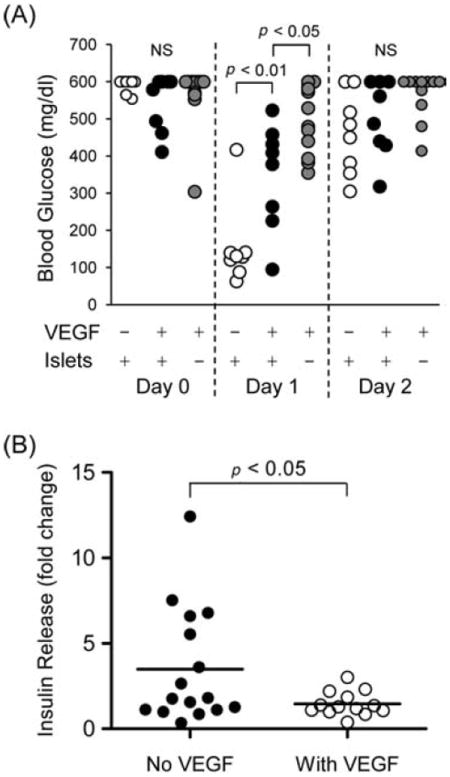Figure 6.

The presence of VEGF in BIs is associated with limitation of postoperative, transitory hypoglycemia. (A, left) Prior to surgery on day 0, all mice within the −VEGF/+Islet, +VEGF/+Islet, and +VEGF/−Islet groups (white, black, and gray circles, respectively) exhibited hyperglycemic BGLs. (A, center) By 24 h (day 1) p-i, seven of eight mice of the −VEGF/+Islet group were hypoglycemic, whereas only one of eight mice of the +VEGF/+Islet group was fully hypoglycemic. None of the mice of the +VEGF/−Islet group were hypoglycemic. (A, right) By 48 h (day 2) p-i, the hypoglycemic episodes had ended: all of the mice within the three groups were hyperglycemic. (B) Glucose-induced insulin release in vitro from isolated islets in the presence or absence of VEGF. Islets were preincubated for 2 h with a low level (5.6 mM) of glucose, with or without 10 ng/ml of VEGF, and then stimulated for 30 min with elevated (16.6 mM) glucose. Fold change represents insulin levels in media before and after glucose stimulus.
